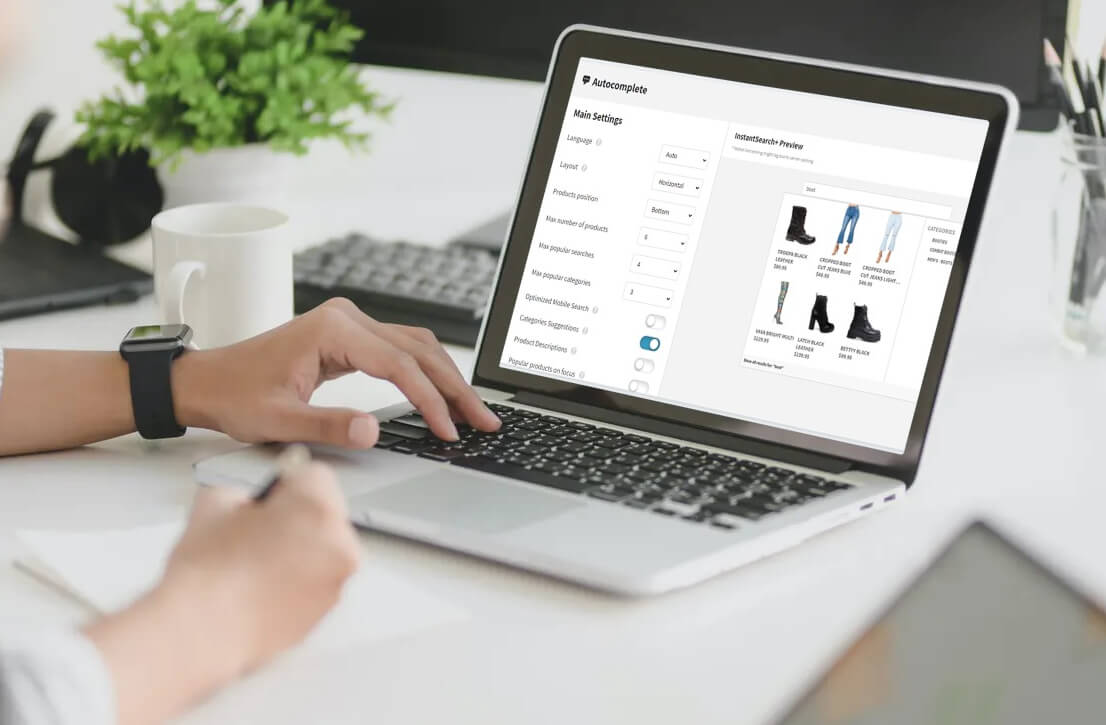Funding for headless commerce platform companies has been pouring in from venture capitalists, and companies are racing to embrace it as they look for any technological advantage in the fast-paced, highly competitive world of e-commerce.
At the simplest level, headless commerce separates the user interface (UX) layer from the e-commerce back-end platform. The front-end presentation layer — the “head,” or what customers see and interact with — is decoupled from the back-end bits and bytes of technology hosting and running site operations.
There are many benefits to a headless commerce platform. So before we look at some of the key questions to answer to determine if it’s the right time to make the leap to headless commerce, let’s weigh some of the common benefits.
More Creative Control
One of the most powerful ways retailers differentiate themselves online is with creative, unique shopping experiences. And for all their advantages, all-in-one shopping platforms (Shopify Search, BigCommerce, Magento Search) can limit or complicate implementing a creative vision. The convenience of a single platform will always sacrifice some flexibility. Decoupling the front-end creative experience in headless commerce delivers full creative control with the barriers of templates, allowing for more customization, personalization and experimentation.

Platform Independence
Few retailers want to be beholden to a single vendor. Everyone likes the idea of platform independence, which promises the flexibility to change. Headless commerce implies that you can retain those front-end experiences and switch the back-end e-commerce platform underneath (rarely is it as easy as it sounds).
Fast Single-Page Application Experiences
A single-page application loads new data into elements of an existing (single) page instead of reloading an entirely new web page and changing all the elements on the page. This creates a much faster user experience. Speed influences everything from buyers to bots (search algorithms) — and you’ve typically got seconds or less before most website viewers decide to stay or go.
Ask These Three Questions Before You Leap Into Headless Commerce
Are the potential benefits of headless commerce right for you? Will it be worth the work? Possibly. Before you jump in, ask yourself these three questions to determine if headless commerce is actually the right move — and certainly address them before making the move.
Did You Exhaust Simpler Optimization Opportunities?
You should exhaust all efforts to bring more traffic to your e-commerce storefront through advertising and site search before you rewrite your underlying platform. After all, what’s the point of all kinds of creative improvements if you’re not bringing buyers in to experience them? After that, explore other changes, like technology add-ons, new merchandising strategies and other initiatives that deliver more immediate benefits. When those efforts hit a technology wall, and success slows, then it’s time to consider more dramatic actions like platform changes. Don’t put a platform change expense before simpler strategies to quickly boost revenues.
What Are the Potential Long-Tail, Surprise Maintenance Costs?
Headless commerce has higher front-end development costs. But it doesn’t stop there. Moving to a custom headless storefront is like any other development project. Seventy percent of the costs are in long-term maintenance. With a separate front and back end, you gain creative flexibility, but you also have two platforms to manage, and ultimately, you likely need two teams working in parallel on each.
Can Our Agency Partners Provide Valuable Lessons To Shape Our Decisions?
Digital agencies make up one of the strongest proponents and driving forces behind headless commerce. Since agencies work with multiple retailers, they have visibility into the success and stumbles of major projects across their portfolio of customers. Tap that knowledge to fully map out the potential benefits, hurdles and costs based on their experience. You are not the first to be going through this journey, so learn from others and use that information to determine if the leap is right for you.
There are plenty of great use cases for headless commerce. But like any technology wave, there’s often a healthy dose of FOMO (fear of missing out) from new technologies, only to find some surprising realities. Start with these questions, and you’ll be better prepared to evaluate if, or when, headless commerce is right for you.
